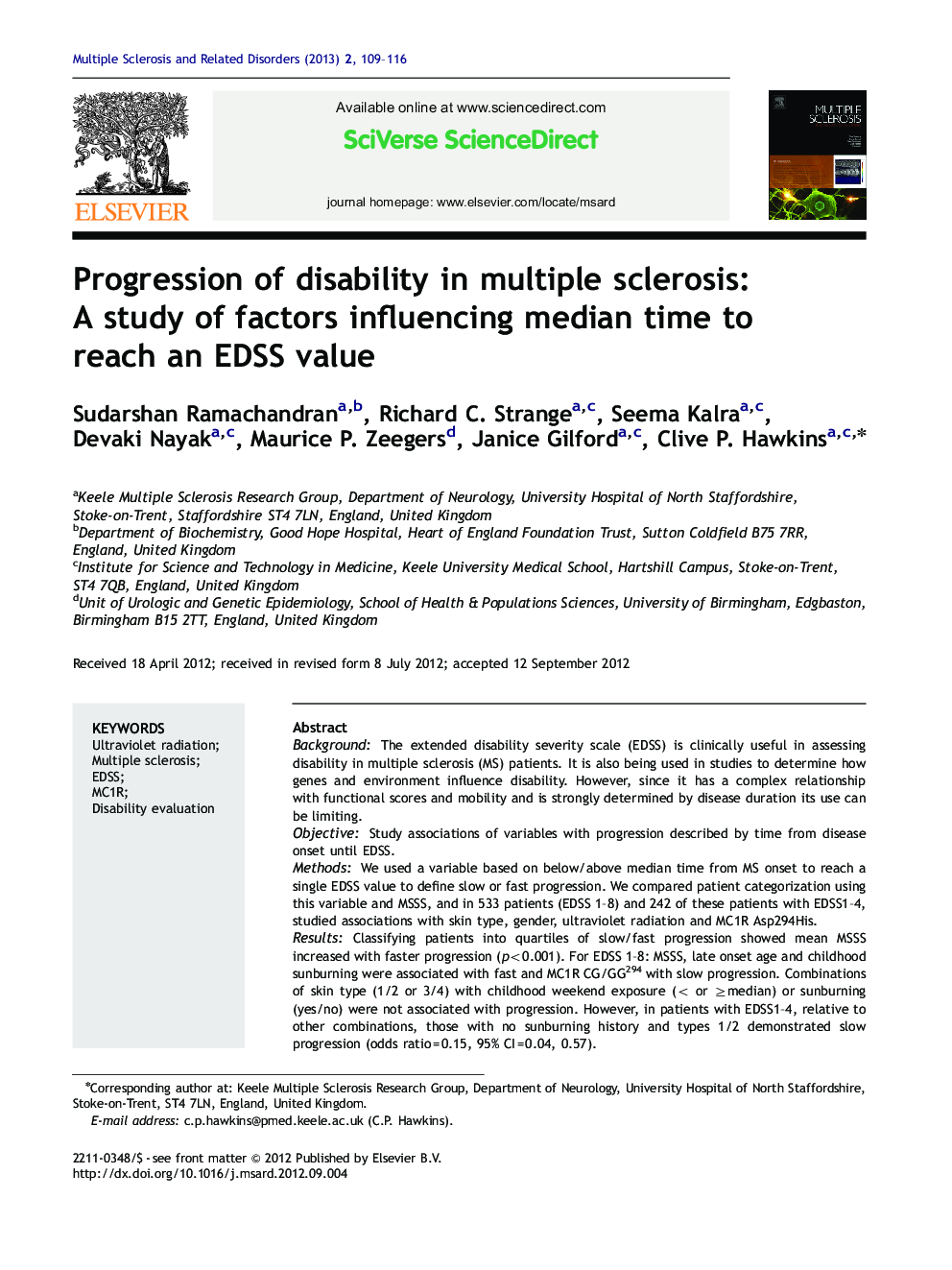| Article ID | Journal | Published Year | Pages | File Type |
|---|---|---|---|---|
| 2823841 | Multiple Sclerosis and Related Disorders | 2013 | 8 Pages |
BackgroundThe extended disability severity scale (EDSS) is clinically useful in assessing disability in multiple sclerosis (MS) patients. It is also being used in studies to determine how genes and environment influence disability. However, since it has a complex relationship with functional scores and mobility and is strongly determined by disease duration its use can be limiting.ObjectiveStudy associations of variables with progression described by time from disease onset until EDSS.MethodsWe used a variable based on below/above median time from MS onset to reach a single EDSS value to define slow or fast progression. We compared patient categorization using this variable and MSSS, and in 533 patients (EDSS 1–8) and 242 of these patients with EDSS1–4, studied associations with skin type, gender, ultraviolet radiation and MC1R Asp294His.ResultsClassifying patients into quartiles of slow/fast progression showed mean MSSS increased with faster progression (p<0.001). For EDSS 1–8: MSSS, late onset age and childhood sunburning were associated with fast and MC1R CG/GG294 with slow progression. Combinations of skin type (1/2 or 3/4) with childhood weekend exposure (< or ≥median) or sunburning (yes/no) were not associated with progression. However, in patients with EDSS1–4, relative to other combinations, those with no sunburning history and types 1/2 demonstrated slow progression (odds ratio=0.15, 95% CI=0.04, 0.57).ConclusionThis method, though a pilot, allows study of associations of variables with EDSS. It is based on local patients and could substitute for MSSS. In patients with EDSS1–4 but not 1–8, skin type 1/2 with no history of childhood sunburning was associated with slow progression. This is compatible with the view that disability develops through a first stage dependent on inflammation.
► Median time to reach an EDSS value progression model allows study of associations of variables with EDSS. ► This progression model could be used as a replacement for the MSSS score if validated. ► In patients with EDSS1–4, skin type 1/2 with no history of childhood sunburning was associated with slow progression.
